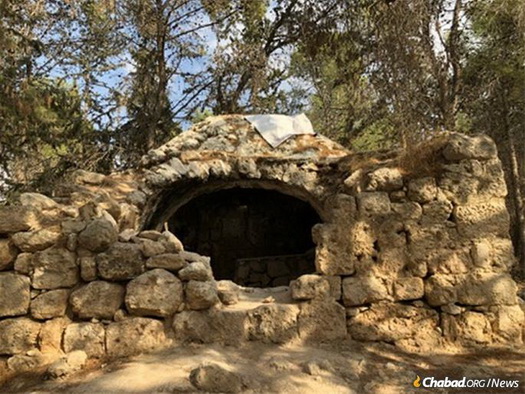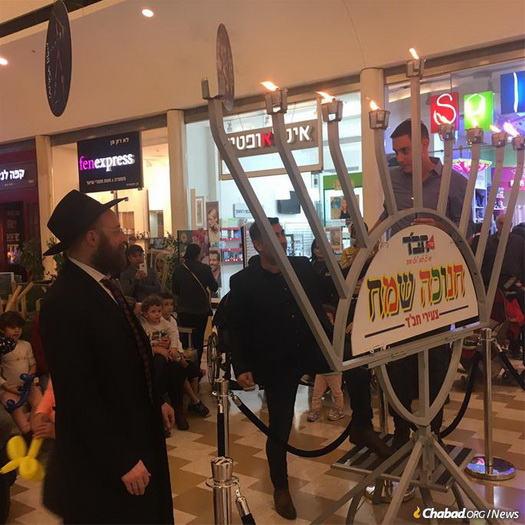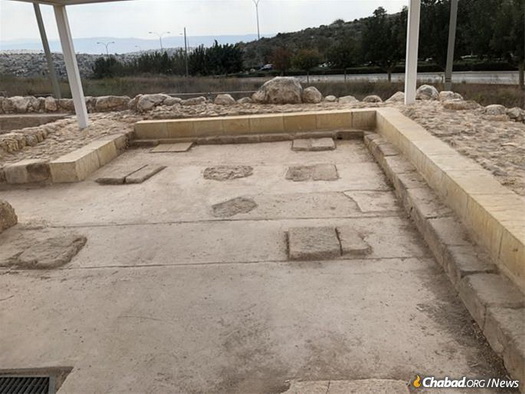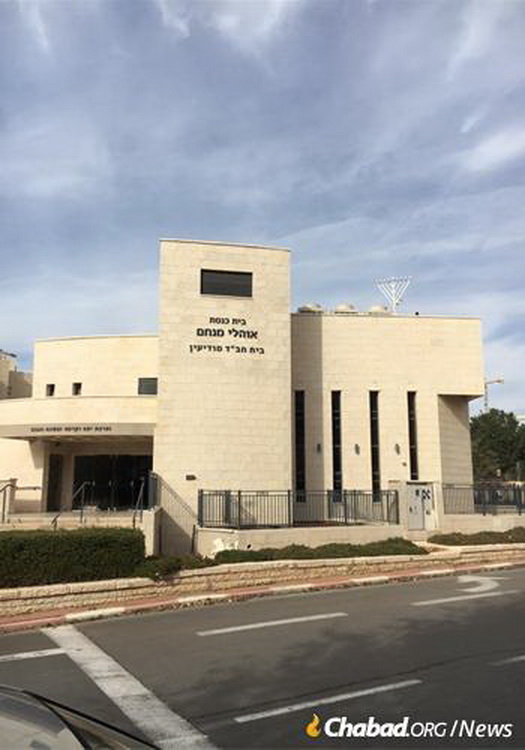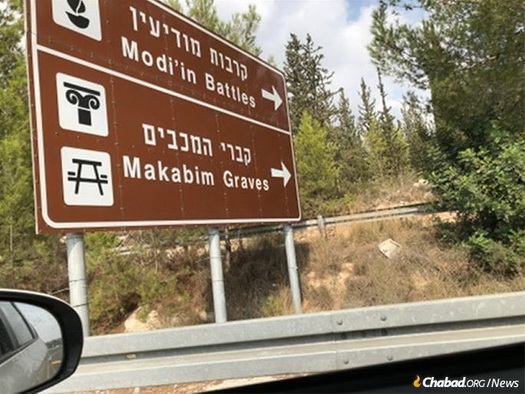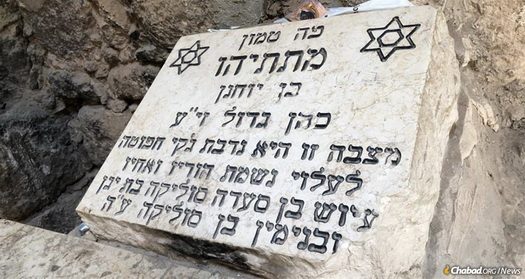
Chanukah Comes to Life in Modi’in, the Birthplace of the Maccabees
by Yehuda Sugar – chabad.org
The people of Modi’in have some pretty big shoes to fill come every Chanukah. The city, located in Israel’s center midway between Jerusalem and Tel Aviv, is the illustrious epicenter of the Chanukah story and hometown of its heroes—the larger-than-life Maccabees and their emboldened leader and father, Matisyahu, the Hasmonean priest.
Considering the gravity of their forebears, by all accounts, they do the job. Year-round, the modern city of Modi’in—much larger than yet positioned approximately on the same tract as the ancient one—doesn’t let its populace forget its prominent place on the historical map. Youth baseball teams are called the Modi’in Miracles, a local yeshivah has the word Lapid (Hebrew for “torch”) in its title, and the formal name of the modern municipality is Modi’in-Maccabim-Reut, whose letters are emblazoned in large form across the entrance to city hall.
By Chanukah time itself, though, the population there and in neighboring Hashmonaim—and to a lesser degree in nearby Lapid and Matisyahu—gears up for the experience to a degree that many feel outshines Chanukah festival observances anywhere else in the world.
“When we are reading the Chanukah story, when Modi’in and the Hasmoneans are mentioned, it makes it all very real,” said Tamar Horn of Hashmoniam, a nearby settlement whose name derives from the priestly family of Chanukah fame—the Hasmoneans, who lived in antiquity in the region. “It is not a story anymore. It is something that happened on our land in our home.”
To mark the holiday this year, Horn, and her husband and children, joined an organized annual walk with dozens of other community members to local sites regarded as the tombs of the Maccabees. There, they drew inspiration from the souls of the courageous spartan Jewish forces that against all odds turned back the much larger Seleucid Greek military in battles that began in and around Modi’in, and that quickly spread through the Judean countryside.
As the story goes, the revolt began when a Greek garrison arrived in Modi’in to pursue the Jewish forces that had fled there from much larger Jerusalem to escape Greek scrutiny. Gathering all the Jews to the town square, the Greeks ordered Matisyahu to offer a hog to the Greek deities. He refused, exhorting the townspeople to be steadfast against the forces antithetical to Torah. When a renegade Jew approached the pagan altar in order to offer the sacrifice himself, Matisyahu killed him and the surrounding Greek soldiers. With other loyal Jews, the aging Matisyahu retreated to the hills and began a guerrilla campaign against the remaining Greek oppressors. Upon his father’s death, the iconic figure of the Chanukah story, Yehuda the Maccabee, rose to the position of leadership, and with help from his brothers and other fellow Maccabees finished the job.
History Comes to Life
Awed by the story more than the average Israeli citizen, the people of Modi’in and Hashmoniam will be abuzz with a variety of super-charged Chanukah activities, including public menorah-lightings at the local mall and other events hosted by the local Chabad-Lubavitch emissaries, Rabbi Boruch Slonim and his wife, Nava, and their counterparts in the Reut neighborhood and in Hashmoniam.
“It’s a big week on the Jewish calendar everywhere, but we can’t help but place extra importance on it in this territory,” said Slonim, who also places public menorahs at key intersections throughout Modi’in and caters to the Chanukah needs of the police force and other civil servants. Each year as part of the festivities, nearly 20 families open their homes in Modi’in for special public menorah-lightings and accompanying Chanukah-themed activities and lectures, all linked to the city’s central role in the Chanukah story. An organization titled “The Modi’in Heritage Conference” also serves to keep the city’s historic role in the momentous affair alive with a lineup of lectures during Chanukah and ongoing research focused on the period throughout the year.
For Yonatan Cohen and fellow Modi’in community members numbering in the hundreds, the highlight of the week is a spirited annual walk to the remains of the second-century Hasmonean period Umm el-Umdan (“Mother of Pillars”) synagogue for the opening prayer service of Shabbat on Friday night.
The Shabbat pilgrimage has been an annual event since 2006, along with another tradition of holding a yearly menorah-lighting at the same site.
Following the service, Rabbi Elli Fischer, local writer and historian, and the initiator of the event, shares topical words of Torah to an already-inspired audience.
“It is a big treat to see 300 to 400 people walking to the ancient synagogue from the time of the Maccabees in freezing weather to daven [pray] together and hear words of Torah in the place where our ancestors once stood,” said Cohen, who made aliyah from Los Angeles seven years ago with his wife and two sons. “There is barely enough light to see our prayer books, but the energy is tremendous.”
Like Tamar Horn, who shared that being able to move to the backyard of the Chanukah story provided some of the impetus for her family’s original move from New Jersey to Israel, Rabbi Fischer said he, too, was drawn by the historical significance of the locale in the decision to move to Modi’in 12 years ago.
“Modi’in was built as a new hyper-modern city, and when the synagogue ruin was discovered and I learned that I could live a four-minute walk away, this is what sold me about living here,” said Fischer, “that you can be part of something new and ancient at the same time.”
But the feelings go deeper, he added, waxing philosophical about Modi’in’s historic fusion with the Chanukah story, its related period sites and the inspiration it all provides for the Jewish people even beyond the Chanukah story and Modi’in.
“Our connection to this place is not just soil and land, but what the Hashmoniam were fighting for—the freedom to worship G‑d and for a particular way of being Jewish,” he said.” When the oldest relic from that period is a beit knesset [synagogue] and mikvah [ritual bath], it is hard to keep us down. These are what makes us. These are what connects us to the past and to the future.”
